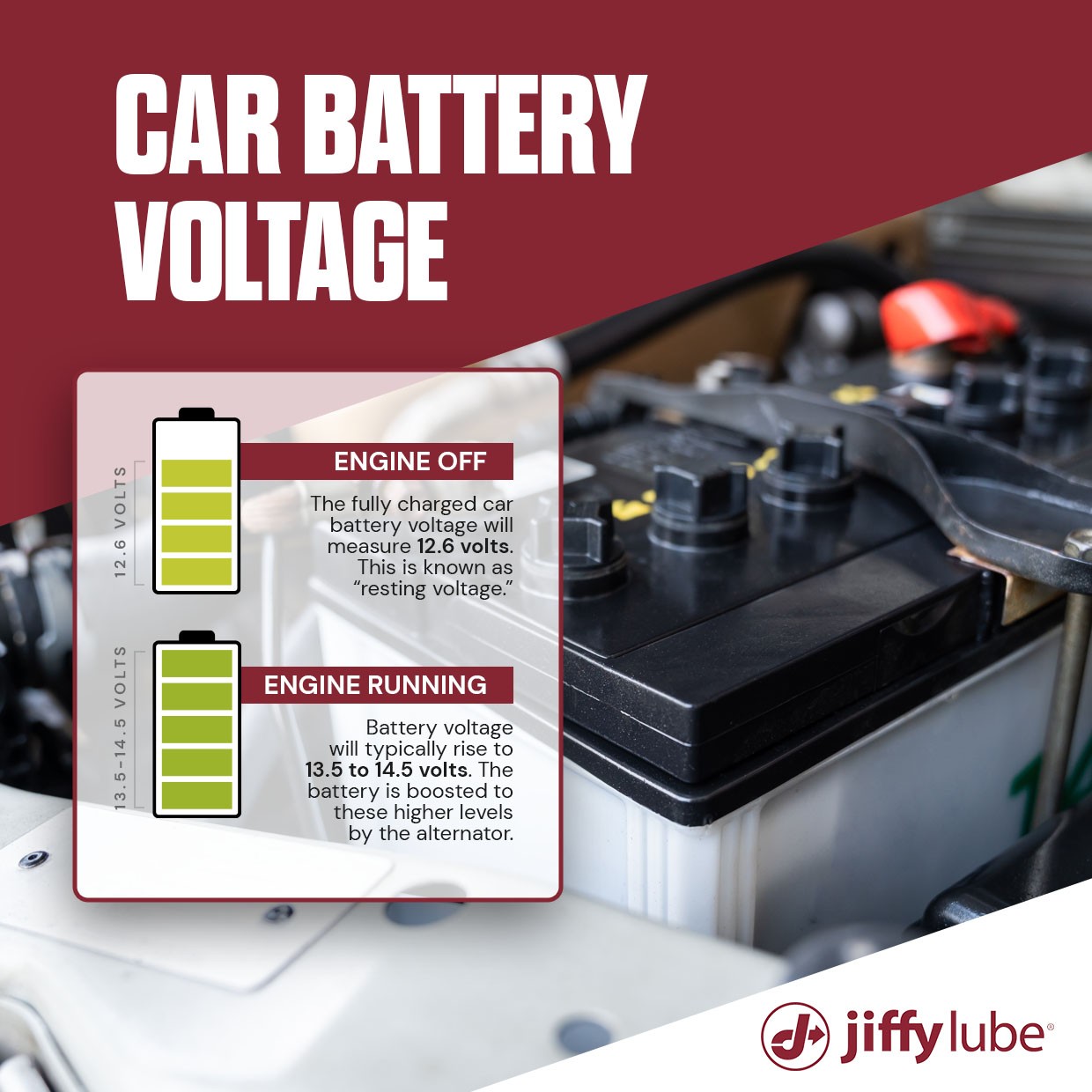Your car battery is the unsung hero powering more than just your engine’s start. From the convenience of power windows to the enjoyment of your car stereo, it’s crucial to a smooth driving experience. Understanding your car battery, especially its voltage, is key to ensuring your vehicle runs reliably. So, what voltage should a car battery have? Let’s dive into the details.
Decoding Car Battery Voltage: What’s Normal?
When we talk about car battery voltage, we’re typically referring to a 12-volt battery system. However, the actual voltage reading isn’t always exactly 12 volts. In reality, a healthy car battery operates within a voltage range, fluctuating depending on whether the engine is running or not.
Understanding Resting Voltage
When your car is turned off and the battery is at rest, a fully charged car battery should measure approximately 12.6 volts. This is known as the resting voltage. A reading at or around 12.6 volts indicates a healthy, fully charged battery ready to power your vehicle’s electrical systems.
Voltage When the Engine is Running
Once you start your engine, the voltage reading will increase. With the engine running, a car battery’s voltage typically rises to between 13.5 and 14.5 volts. This increase is due to the alternator, which recharges the battery and powers the electrical system while the engine is running. The alternator ensures that the battery remains charged and can continue to function correctly.
To fully grasp these voltage variations, let’s take a closer look at how car batteries function within your vehicle’s electrical system.
How Car Batteries Power Your Ride
Car batteries are essential components of your vehicle’s starting and charging system. They work through a simple yet crucial three-step process:
- Energy Storage: The battery acts as a reservoir of electrical energy, ready to be deployed when needed.
- Engine Cranking: When you turn the ignition key, the battery releases electrical energy to the starter motor. The starter then converts this electrical energy into mechanical energy, which cranks the engine and gets it running.
- Recharging by the Alternator: Once the engine is running, the alternator takes over. Driven by the engine, the alternator generates an electric current. This current serves two primary purposes: it recharges the battery, replenishing the energy used to start the engine, and it powers the vehicle’s electrical systems, such as lights, radio, and accessories, while driving.
This cycle of energy conversion and recharging is continuous, ensuring your engine keeps running and your electrical components remain powered.
Amperage and CCA: More Than Just Voltage
While voltage is a crucial aspect of car batteries, amperage is another important factor to consider. Amperage, measured in amps, describes the current flow from the battery. Think of voltage as the pressure and amperage as the flow rate of electricity.
Amperage Ratings and Vehicle Needs
The amperage rating of a car battery isn’t fixed; it varies depending on the electrical demands of your vehicle. Cars with more features and electronic accessories, like power-hungry audio systems, heated seats, and advanced safety systems, will require batteries with higher amperage ratings. Typical car battery amperage ranges from 450 to 750 CCA.
Understanding Cold Cranking Amps (CCA)
CCA, or Cold Cranking Amps, is a specific rating that indicates a battery’s starting power in cold temperatures. CCA is defined as the number of amps a 12-volt battery can deliver at 0°F (-17.8°C) for 30 seconds while maintaining a voltage of 7.2 volts or higher. A higher CCA rating signifies greater starting power, which is especially critical in cold climates where engines are harder to start.
Why Maintaining Proper Car Battery Voltage is Crucial
Maintaining the correct car battery voltage is essential for vehicle reliability and performance. Voltage issues can lead to a range of problems:
- Starting Problems: Insufficient voltage is a primary cause of cars failing to start. If your battery voltage is too low, it may not provide enough power to crank the engine, leaving you stranded.
- Electrical System Malfunctions: Consistent voltage drops can negatively impact other electrical components in your vehicle. This can lead to dimming headlights, malfunctioning power windows, issues with the car’s computer systems, and reduced performance of other electronic features.
Keeping Your Battery in Top Shape: Maintenance Tips
Regular maintenance is key to ensuring your car battery maintains optimal voltage and a long lifespan. Here are some essential maintenance tips:
- Regular Inspections: It’s recommended to have your car battery inspected at least every 6 months or 6,000 miles. Refer to your vehicle’s owner’s manual for specific recommendations.
- Professional Battery Service: Consider professional battery maintenance services, like those offered at Jiffy Lube®, to ensure thorough checks and proper maintenance. Technicians can assess battery health, clean terminals, and perform load tests to identify potential issues before they become major problems.
Recognizing the Warning Signs: Battery Trouble Indicators
Even with regular maintenance, car batteries can sometimes experience issues. Be alert to these common symptoms of battery trouble:
- Dim Headlights or Interior Lights: Weak or dim lights, especially at idle, can indicate the battery is struggling to hold a charge.
- Check Engine or Charging Light: Illumination of the “Check Engine” light or a dedicated “Charging System” light on your dashboard can signal battery or charging system problems.
- Slow Engine Cranking: If your engine cranks slowly or hesitates before starting, it could be a sign of a weakening battery.
- Electrical Accessory Issues: Malfunctioning power seats, slow power windows, or issues with other electrical accessories can point to battery voltage problems.
If you notice any of these signs, it’s crucial to have your battery and charging system checked by a qualified technician as soon as possible.
Jiffy Lube® for Battery Service and Peace of Mind
Maintaining your car battery’s health is crucial for avoiding inconvenient breakdowns and ensuring your vehicle operates reliably. Jiffy Lube® offers comprehensive battery services to help you keep your battery in top condition. When you visit a Jiffy Lube location for a battery check, you can expect a trained technician to:
- Assess Your Driving Habits: Understand your driving style to evaluate its potential impact on your battery and charging system.
- Perform Visual Inspection: Thoroughly inspect the battery, including its physical condition, hold-down mechanism, and terminal connections.
- Clean Battery Terminals: Clean battery terminals to remove corrosion and ensure good electrical contact (with your approval).
- Replace Cables if Needed: Replace worn or damaged battery cables to ensure proper current flow (with your approval).
- Tighten Connections: Inspect and tighten battery connections to prevent voltage drops and ensure reliable performance.
- Test Battery Strength: Use a multimeter to accurately measure battery voltage and assess its overall strength.
- Check Fluid Levels: Inspect and adjust battery fluid levels in serviceable batteries (if applicable).
Stay Powered Up and On the Road
Understanding how much voltage your car battery should have, and recognizing the signs of battery trouble, are vital for responsible car ownership. Regular maintenance, including battery checks and timely replacements when needed, can significantly extend battery life and prevent unexpected issues. By staying proactive with battery care, you can ensure your vehicle remains powered up and ready for every journey.
For professional battery service and maintenance, rely on the expertise of Jiffy Lube® technicians to keep you rolling. And remember, preventive maintenance is not just about your battery; it’s about saving you time and money in the long run by addressing small issues before they become costly repairs.

